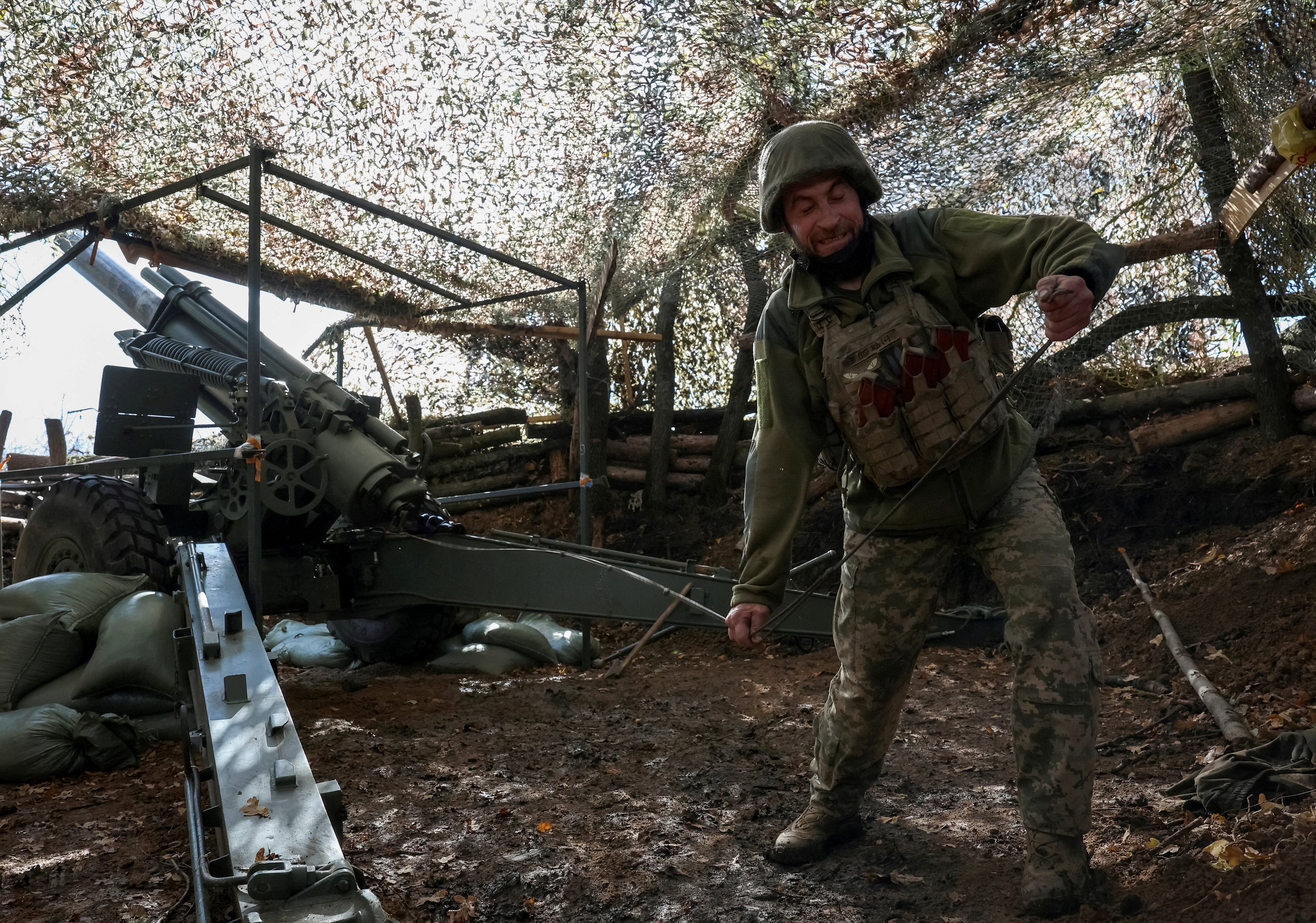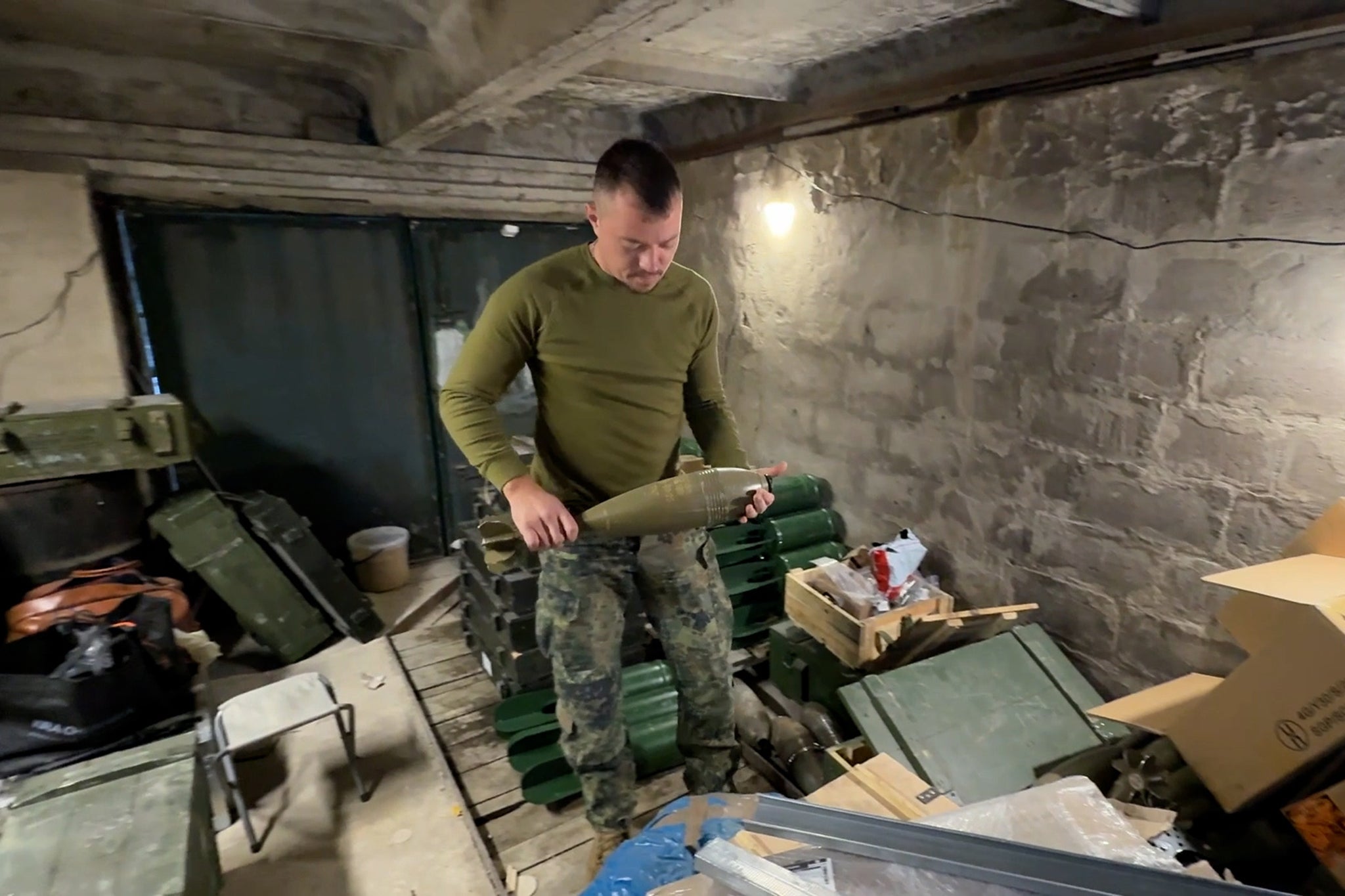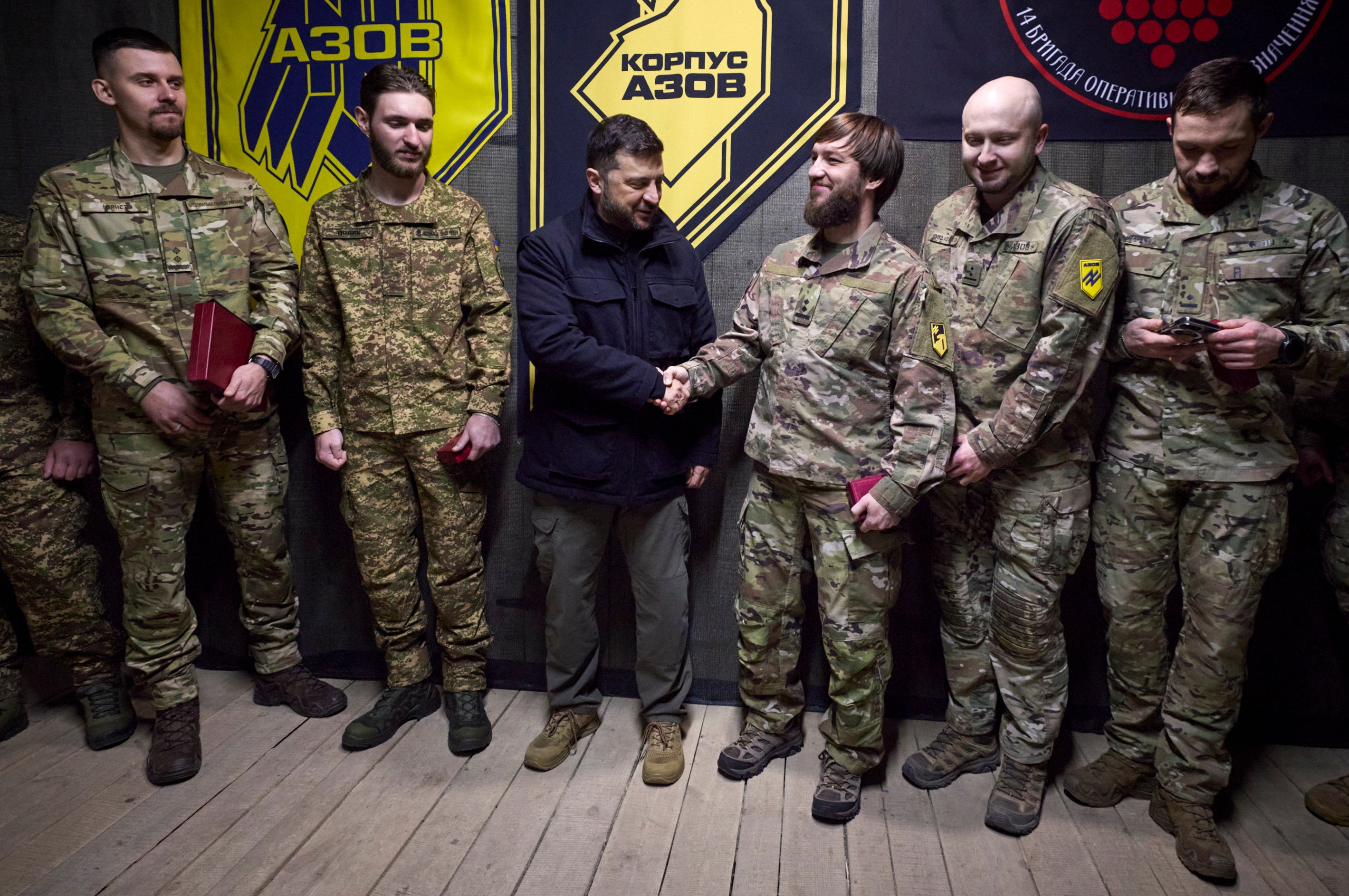Not a word of what the Russian defence ministry says is credible. Its claims that Russian troops have surrounded Ukrainian forces in Pokrovsk, Kostyantynivka and Kupiansk, in eastern Ukraine, are agitprop.
But Volodymyr Zelensky’s statement from the front line that his country’s fighters are “under pressure” is something of an understatement.
Ukraine's top military commander, Oleksandr Syrskyi, told the New York Post that Russia was concentrating some 150,000 troops on a drive to capture the town, which is much prized by Russia.
Dozens, perhaps hundreds, of Russian troops may have already successfully infiltrated the three tactically important towns.
Kupiansk is on Russia’s route towards Kharkiv. The other two control the eastern and southern routes to the last remaining Ukrainian redoubts in Donetsk – Kramatorsk and Slaviansk.
Vladimir Putin has thrown a massive effort into the fight for Donetsk, which Moscow has already illegally “annexed”.
They have paid a gigantic price in blood for tiny territorial gains. At the rate Russia is advancing intelligence sources estimate that it could take Moscow more than 100 years to capture Ukraine. Russia is estimated to have lost 1.5 million killed and injured since 2022 but Putin’s latest efforts have taken on a new urgency.
Yet, if Pokrovsk falls eventually, there will be nothing left of this former garrison town.
Just as there is nothing left of nearby Bakhmut or Avdiivka, which fell almost two years ago in what was the last significant Russian gain in this grinding war.

These Russian-speaking towns, like Mariupol before them, are the scenes of atrocities against Russian-speaking civilians committed by a Russian army deployed, the Russian leader says, to protect Russian-speaking people from Ukrainian abuses.
Moscow says Ukrainian troops are now trapped in three “cauldrons”. It is offering the troops “encircled” there the opportunity to surrender. They are not encircled. They do not need to, and will not, surrender.
Russia has stretched Ukraine’s ability to defend a front line that’s about 1,300km long. It has launched feint attacks from Zaporizhzhia in the south to Sumy in the far north. But its main effort has been Putin’s passion to take all of Donetsk before any kind of a future ceasefire “freezes” the front lines.
In the new field of drone warfare, Russia has moved as quickly to adapt as Ukraine’s techno-savvy volunteers. Kyiv’s forces up and down that front line speak with fearful admiration of the Rubicon unit of Moscow’s forces, who are highly trained specialist drone operators.
“We can tell when they’re in our area because their skills go up. They train people well and when they leave, they leave those skills behind,” said Grey, a lieutenant in a Ukrainian frontline drone unit close to Zaporizhzhia.

The Rubicon Centre for Advanced Unmanned Technologies – Russia’s response to Ukraine’s establishment of a separate drone force alongside the army, navy and air forces – has been combined with Russian special forces to focus on Kyiv’s frontline drone operators.
Scattered along the front, the Ukrainians have been able to hold Russian assaults back with relatively low numbers of troops in danger. Operating from hidden bunkers, their First Person View (FPV) attack drones, bombers, and interceptors, have enabled Ukraine to rebalance the battlefield where Russian weight of numbers had dominated.
But by using Spetsnaz special forces units and drone swarms, Russian commanders have focused their efforts on overwhelming Ukrainian pilots in their hideouts.
These tactics appear to be paying off. But they also exact a massive cost on Russia’s regular army, which is ordered into towns like Pokrovsk and are vulnerable to Ukrainian drones flying from deeper into the country.
Ukraine is reported to have sent its own special forces into the fight for Pokrovsk. If the pattern of previous battles for eastern towns and cities is repeated, it could be a year at least and many tens of thousands of Russian dead, before they fall. If they fall.
The landscape behind the Ukrainian front lines has been prepared for a fighting retreat by Kyiv forces. Thousands of miles of trenches, barriers, tank traps and barbed wire mazes have been laid. No doubt, secret mine fields, stay-behind-bunkers for behind-the-lines operations and meticulously calibrated targeting will make Russia’s next phase another session in the “meat grinder” of Ukraine’s eastern front.

Russia’s calculation is that it can outlast Ukraine. The Kremlin can feed an unlimited number of troops into the cauldron.
Ukraine’s calculation is that since Moscow already has to motivate soldiers with $3,000 a month salaries, the pool of willing troops is drying up while Ukraine targets the Russian industrial machine by bombing its oil infrastructure.
Moscow is hanging on and Kyiv is buying time. The latter is hoping for a strategic boost from the US or Europe to supply it with the long-range weapons that can reach deep into Russian territory and smash the Kremlin’s morale and supply lines to Ukraine.
As a senior Nato intelligence officer pointed out recently: “This is the mid-point of a long war.”
Ukraine war latest: Zelensky says bad weather favours Moscow in battle for Pokrovsk
Australia's top court rejects Russia's challenge to embassy eviction
Britain to tighten restrictions on Russian gas exports – here’s why
Turkey says all 20 soldiers on board military cargo plane killed in Georgia crash
Casualties feared as Turkish military plane crashes in Georgia
Prosecutor seeking 2,352-year jail term for Istanbul mayor over alleged corruption







